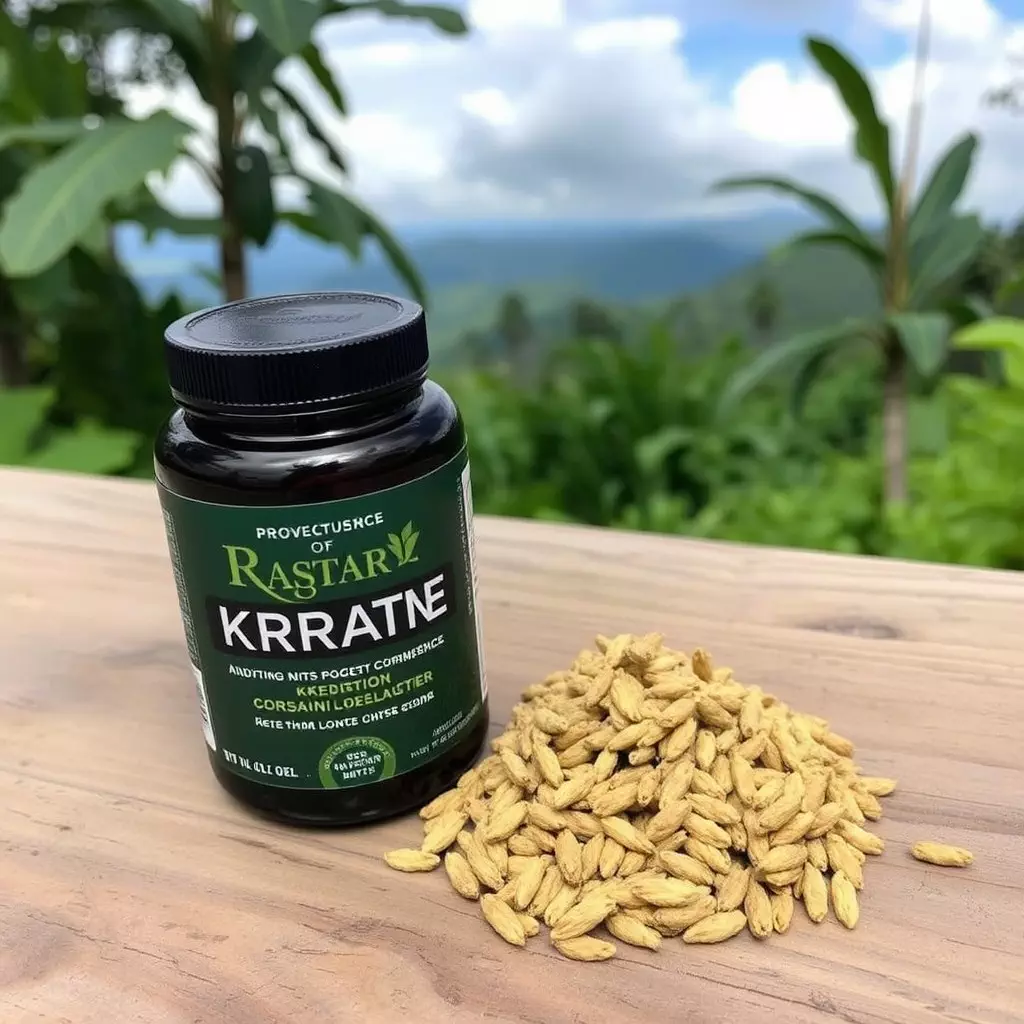Kratom, a natural substance from Southeast Asia, has been studied for its anti-inflammatory properties, primarily due to compounds like mitragynine and 7-hydroxymitragynine, which may act on opioid receptors. Its holistic approach to managing pain and inflammation is highlighted, with the potential for a synergistic effect when combined with aromatherapy using diffuser thieves oil. This blend, created by Young Living, contains clove, cinnamon, lemon, and eucalyptus essential oils, known for their immune-boosting and anti-inflammatory qualities. The combination of kratom and diffuser thieves oil can enhance the anti-inflammatory benefits and provide additional mood-enhancing effects. It's crucial to approach this therapy with caution, starting with conservative dosages of kratom and ensuring compatibility between essential oils for safety and optimal health outcomes. This holistic approach offers a gentle yet effective method for managing inflammation, pain, and supporting overall wellness. Users are advised to consult healthcare professionals before incorporating these treatments into their health regimen, considering individual health profiles and medical histories.
Exploring the therapeutic potential of kratom in reducing inflammation, this article delves into its holistic application and synergistic effects when combined with aromatherapy, particularly through the use of diffuser blends featuring Thieves Oil. We’ll navigate the scientific underpinnings and safety considerations of incorporating kratom into your health regimen to combat chronic inflammation, providing a comprehensive overview for those interested in natural alternatives for wellness.
- Unlocking the Potential of Kratom for Inflammation Reduction: A Holistic Approach
- Integrating Kratom with Aromatherapy: The Synergy of Diffuser Blends and Thieves Oil for Optimal Health
- Navigating the Science and Safety of Using Kratom to Combat Chronic Inflammation
Unlocking the Potential of Kratom for Inflammation Reduction: A Holistic Approach
Kratom, a tropical evergreen tree native to Southeast Asia, has garnered attention for its potential anti-inflammatory properties, which may be harnessed to alleviate inflammation in various conditions. The active compounds present in kratom leaves, primarily mitragynine and 7-hydroxymitragynine, have been studied for their analgesic and anti-inflammatory effects. These alkaloids may interact with the body’s opioid receptors, offering a natural alternative to traditional pain management strategies. The holistic approach to inflammation reduction with kratom not only focuses on symptom relief but also aims to address the underlying causes of inflammation. This comprehensive strategy can be complemented by other therapeutic practices, such as the use of essential oils in a diffuser thieves blend, which is known for its anti-inflammatory and immune-boosting properties. The diffuser thieves oil combination, often consisting of clove, cinnamon, lemon, and eucalyptus oils, can create an aromatic environment that may aid in reducing inflammation and promoting well-being, making it a valuable addition to a holistic anti-inflammatory regimen alongside kratom. Users are encouraged to consult healthcare professionals when integrating these natural remedies into their health routines, ensuring safe and effective use based on individual needs and medical history.
Integrating Kratom with Aromatherapy: The Synergy of Diffuser Blends and Thieves Oil for Optimal Health
Kratom, a natural plant from Southeast Asia, has garnered attention for its potential in reducing inflammation and alleviating pain. When considering complementary approaches to enhance its benefits, integrating kratom with aromatherapy can create a synergistic effect that promotes optimal health. Aromatherapy, specifically the use of diffuser blends featuring essential oils like Thieves Oil from Young Living, can amplify the therapeutic experience. Thieves Oil is a blend of clove, cinnamon, rosemary, and eucalyptus radiata, known for its antimicrobial and immune-boosting properties. By incorporating this oil into a diffuser, the volatile compounds within the essential oils are dispersed into the air, providing a soothing atmosphere that can complement kratom’s anti-inflammatory effects. The synergy of diffuser blends with Thieves Oil and kratom may offer an enhanced anti-inflammatory response, potentially leading to better pain management and overall well-being. Users often report a sense of calm and improved mood when using these combined therapies, which can be beneficial for those looking to manage inflammation and its associated discomforts in a holistic manner.
For individuals seeking to incorporate this approach into their wellness routine, it is recommended to start with a low dosage of kratom and to carefully select essential oils that complement each other and are safe for use. The key to maximizing the benefits of this combination lies in the careful selection of both kratom strains and aromatherapy components, ensuring they work synergistically without causing adverse effects. This harmonious integration of kratom with Thieves Oil diffuser blends can be a gentle yet potent way to address inflammation and support a healthy body and mind.
Navigating the Science and Safety of Using Kratom to Combat Chronic Inflammation
Kratom, a plant originating from Southeast Asia, has garnered attention for its potential anti-inflammatory properties. The leaves of kratom contain alkaloids such as mitragynine and 7-hydroxymitragynine, which have been studied for their effects on inflammation. These compounds may interact with the body’s opioid receptors, offering a natural approach to reducing chronic inflammation, a condition that underlies many debilitating diseases. However, it is crucial to understand the science and safety of using kratom for this purpose. Research into kratom’s efficacy and safety is ongoing, with some studies suggesting its potential in managing pain and inflammation, while others highlight the need for more comprehensive research due to the plant’s complex pharmacology. Users interested in exploring kratom as a supplementary measure should be well-informed about dosage, quality control, and potential interactions with other medications. Moreover, adherence to guidelines set forth by health authorities is essential when considering any form of alternative therapy alongside conventional treatments. The Diffuser Thieves oil blend, known for its anti-inflammatory properties, can be a complementary approach in managing inflammation. It is composed of ingredients like eucalyptus, rosemary, and clove bud, which have historically been used for their therapeutic effects. When integrating kratom into one’s health regimen, it is advisable to consult with healthcare professionals to ensure the safest and most effective approach, particularly considering individual differences in response to supplements and medications.
Kratom has shown promising potential in the natural management of inflammation, offering a holistic alternative to traditional treatments. The synergy between kratom and aromatherapy, as detailed in “Integrating Kratom with Aromatherapy: The Synergy of Diffuser Blends and Thieves Oil for Optimal Health,” emphasizes the benefits of incorporating diffuser blends like Thieves Oil into a wellness regimen. This integration can enhance the anti-inflammatory effects and overall health outcomes. It is crucial to approach the use of kratom with scientific understanding and safety considerations, as outlined in “Navigating the Science and Safety of Using Kratom to Combat Chronic Inflammation.” By doing so, individuals can harness its benefits effectively while ensuring their well-being. As the evidence mounts, it becomes clear that kratom, combined with aromatherapy methods such as diffusing Thieves Oil, could be a valuable tool in the fight against inflammation.






